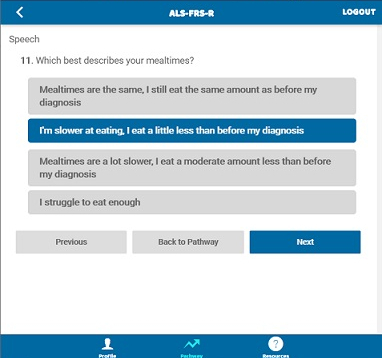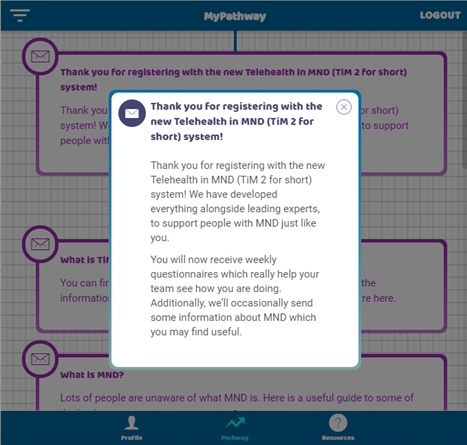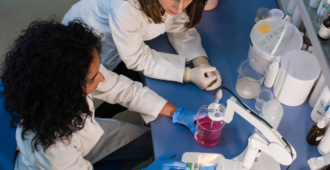Guest researcher blog post written by Liam Knox:
My name is Liam Knox and I am a Postdoctoral Research Associate who has recently joined Dr Esther Hobson and Prof. Chris McDermott (consultant neurologists) on the Telehealth in Motor Neuron Disease, or ‘TiM’ for short, project at the Sheffield Institute for Translational Neuroscience (SITRaN). I have a background in health psychology and am particularly interested in motivation to self-manage in people with long-term conditions and the use of technology within healthcare. Therefore, joining the ‘TiM Team’ has been a great experience for me, because I get to help project manage a novel system that can help people affected by MND but also reflects some of the research I have done previously.
About the project
Before COVID-19, the University of Sheffield and the Sheffield MND Care and Research Centre were collaborating on a project, funded by the MND Scotland charity, to develop a system to help increase communication between people with MND, their caregivers, and healthcare professionals. Based upon previous research conducted in Sheffield and working alongside people affected by MND, the easy-to-use platform sends weekly questionnaires and information leaflets to people with MND and their caregivers.

A wide-range of questionnaires are used to help measure weight, appetite, functional abilities, and more, to provide the clinical team with a full picture of how people are doing. Questionnaires take a maximum of 15 minutes per week. Answers can immediately be reviewed remotely by healthcare professionals, enabling care decisions to be made between clinic visits. It is hoped that with this increase in information being available, those who need a sooner appointment can have one arranged and those who are managing well do not need to come into the hospital.
We originally planned to further develop the system and invite people to begin using it over the next six months. However, we recognised that, as people with MND are currently shielding, a system that can remotely help provide care may be just the thing that is needed to help respond to the COVID-19 pandemic. Therefore, we have rapidly increased the speed of development and are happy to announce that we have just released our TiM platform in Sheffield and are beginning to invite people to use it.

We have also spoken with other MND specialist centres in the UK, and across Europe, to begin discussing how they may also be able to start using the TiM system to help them continue to provide the very best of care. Although these have just begun, many MND healthcare professionals have been extremely positive about the system and how it can help people with MND and their caregivers who may otherwise not be able to be seen.
Although it has been a busy couple of weeks developing the platform and learning how to work remotely, the TiM team and ADI – our industry partners – have pulled out all the stops to provide a system that can help those under our care. We look forward to working with people with MND and their caregivers in the future to further develop the platform.
“People with MND face long and challenging journeys to attend their nearest specialist MND Care Centre, so the development and implementation of new ways of improving the contact between patients and clinical staff has been a longstanding priority.
We see Telehealth not just as a tremendous opportunity to improve the quality of care, but also as a catalyst for improving clinical trials and other research studies, by allowing researchers to collect much higher quality and ‘real world’ information.
In a few years’ time, Telehealth will be ‘part of the fabric’ and clinicians and researchers will be wondering how they ever managed without it.”
Dr Brian Dickie, Director of Research at MND Association
For more information, please visit the TiM2 page of the SITRaN website here.
We’d like to thank Liam for taking the time to write this blog post to share his work on the Telehealth in MND project during the COVID-19 pandemic.





